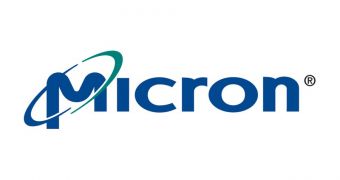Since capacity is really the only reason, besides pricing in some instances, that has prevented Flash-based storage from becoming even more prominent than it already is, Micron figured it would release a number of high-capacity NAND products.
Micron just issued a press release to announce its family of ClearNAND devices that combine high capacities with error management techniques.
They all use a traditional raw NAND interface and are optimized for high-capacity and high-performance applications and user-oriented uses alike.
They are designed on the company's 25nm multi-level cell (MLC) manufacturing process and are available in Standard and Enhanced versions.
The Standard ones have capacities of 8 to 32 GB and have, as a major advantage, the ability to remove the ECC burden from the host processor, all with minimal protocol changes.
They are intended for consumer electronics and portable media players, while the Enhanced ClearNAND also boast features mainly intended for enterprise installations, such as better reliability and performance (capacities are of 16 to 64 GB).
All of them are already available an should be included in new devices soon enough.
"The pace of NAND scaling is largely responsible for the incredible growth and success the industry has seen to date, and for helping to create new flash-based storage solutions," said Glen Hawk, vice president of Micron's NAND Solutions Group.
"While the advantages in NAND scaling are evident, so are the challenges with the technology becoming increasingly more difficult to manage. Micron's ClearNAND products remove this management burden for our customers and extend the life of this all-important technology," Hawk added.
"As the industry continues to reduce costs by moving to smaller and smaller geometries, the challenge has been to maintain equivalent system performance and endurance as the previous process generation," said Greg Wong, founder and principal analyst at Forward Insights.
"With its ClearNAND portfolio, Micron has developed a solution that overcomes these challenges, enabling customers to utilize the most advanced NAND technology in even the most demanding applications," he concluded.

 14 DAY TRIAL //
14 DAY TRIAL //